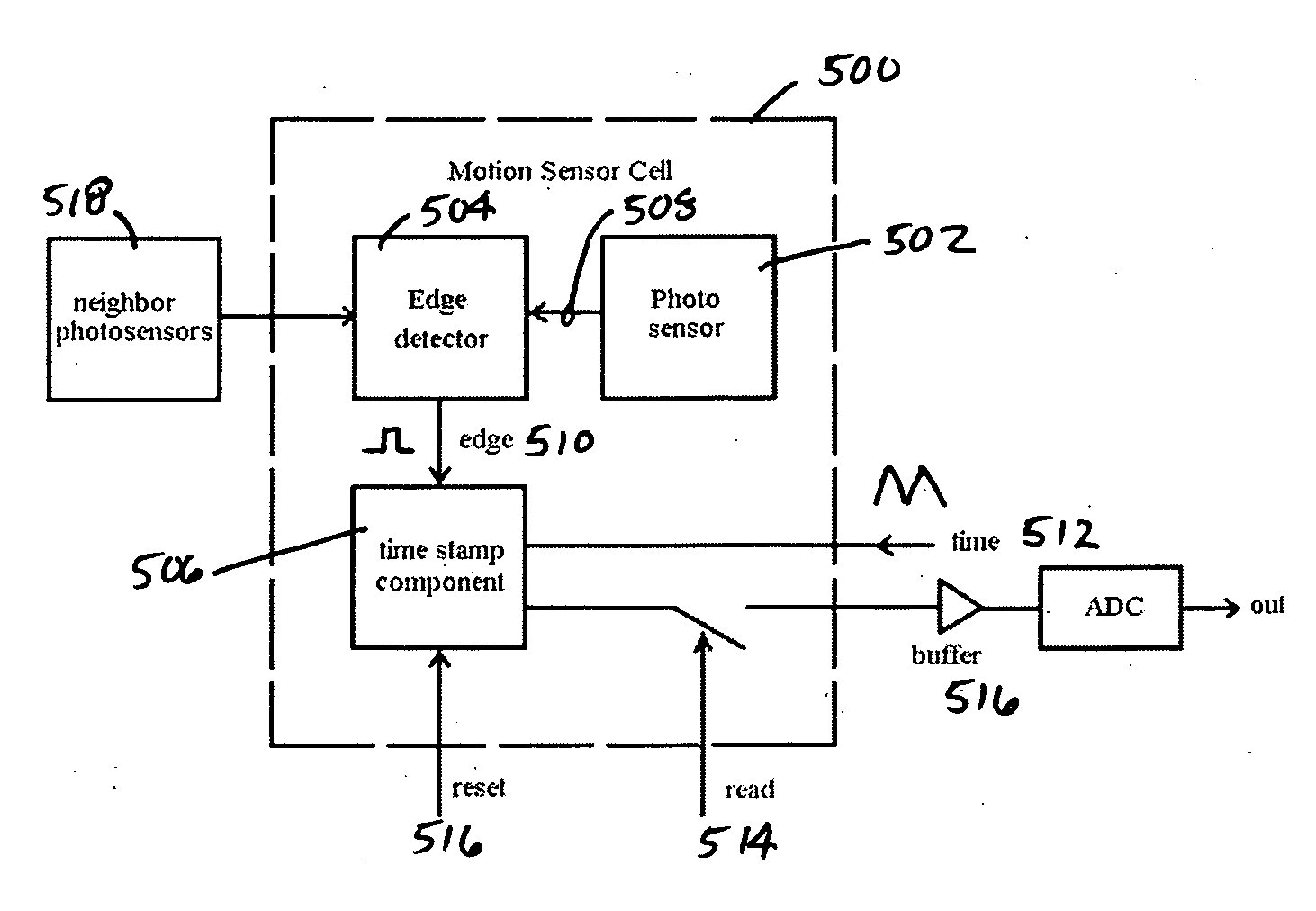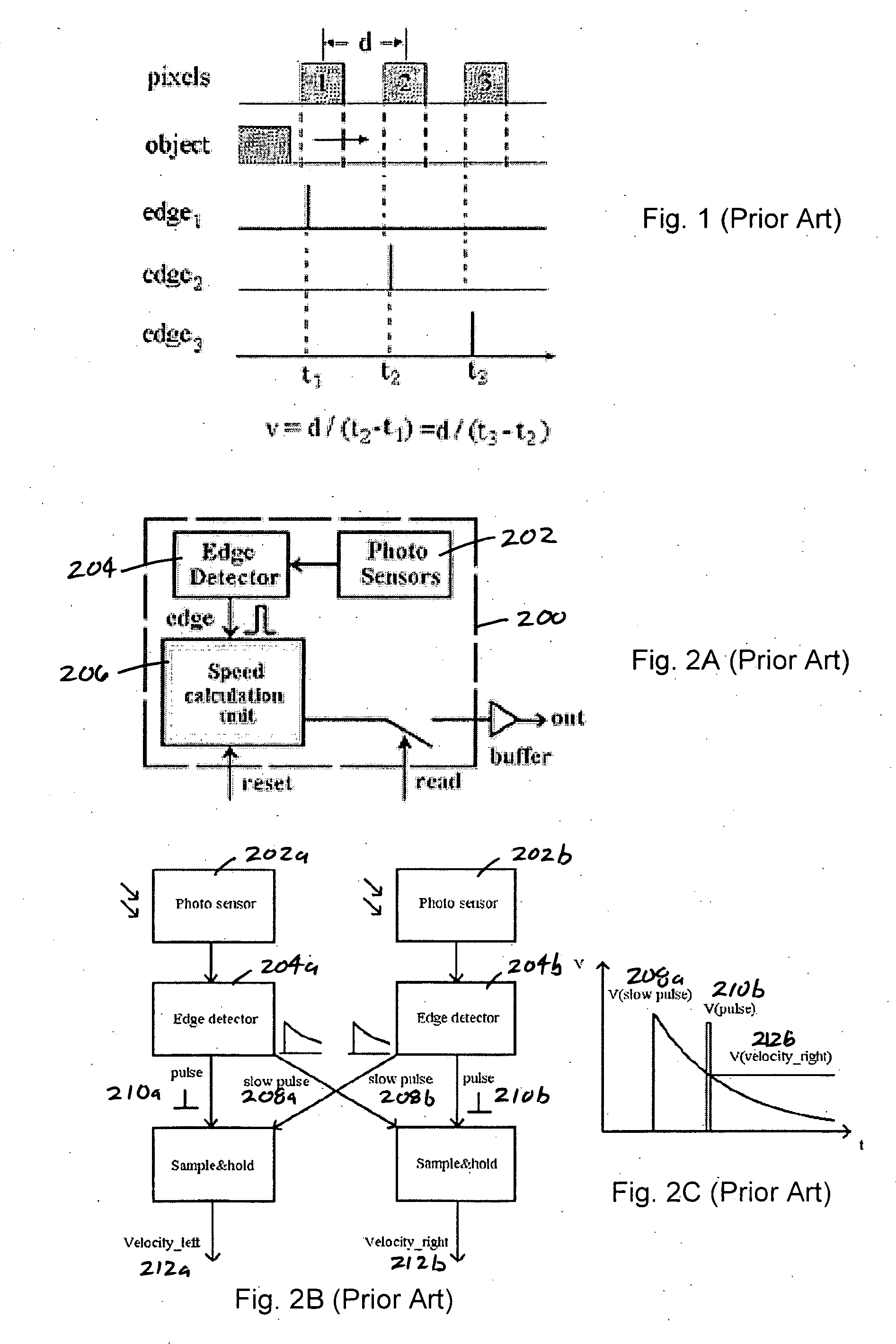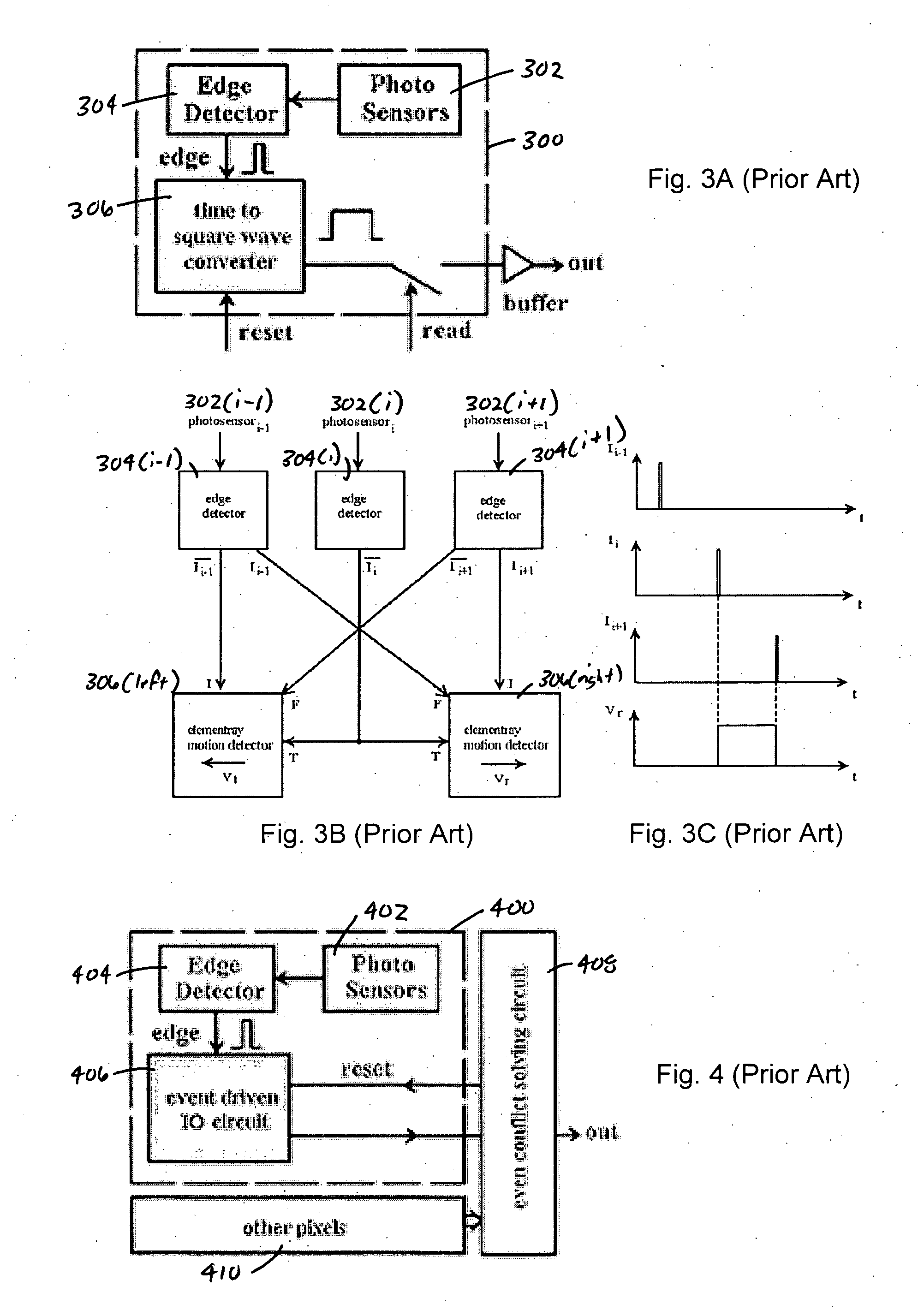Method, system and apparatus for a time stamped visual motion sensor
a motion sensor and time stamp technology, applied in the field of visual motion detection, can solve the problems of small computational resource left for the computer, high computation load and data transfer load between the camera and the processor for large-scale 2-d arrays, etc., and achieve the effect of high resolution, high speed motion detection, and accuracy in velocity computation
- Summary
- Abstract
- Description
- Claims
- Application Information
AI Technical Summary
Benefits of technology
Problems solved by technology
Method used
Image
Examples
Embodiment Construction
[0060] While the making and using of various embodiments of the present invention are discussed in detail below, it should be appreciated that the present invention provides many applicable inventive concepts that can be embodied in a wide variety of specific contexts. The specific embodiments discussed herein are merely illustrative of specific ways to make and use the invention and do not delimit the scope of the invention.
[0061] The present invention provides a method, system and apparatus for a time stamped visual motion sensor that provides a compact pixel size, higher speed motion detection and accuracy in velocity computation, high resolution, low power integration and reduces the data transfer and computation load of the following digital processor. More specifically, the present invention provides a new pixel structure based on a time stamped architecture for high-speed motion detection that solves many of the problems found in prior art devices. The relatively simple stru...
PUM
| Property | Measurement | Unit |
|---|---|---|
| size | aaaaa | aaaaa |
| pixel size | aaaaa | aaaaa |
| peak time resolution | aaaaa | aaaaa |
Abstract
Description
Claims
Application Information
 Login to View More
Login to View More - R&D
- Intellectual Property
- Life Sciences
- Materials
- Tech Scout
- Unparalleled Data Quality
- Higher Quality Content
- 60% Fewer Hallucinations
Browse by: Latest US Patents, China's latest patents, Technical Efficacy Thesaurus, Application Domain, Technology Topic, Popular Technical Reports.
© 2025 PatSnap. All rights reserved.Legal|Privacy policy|Modern Slavery Act Transparency Statement|Sitemap|About US| Contact US: help@patsnap.com



